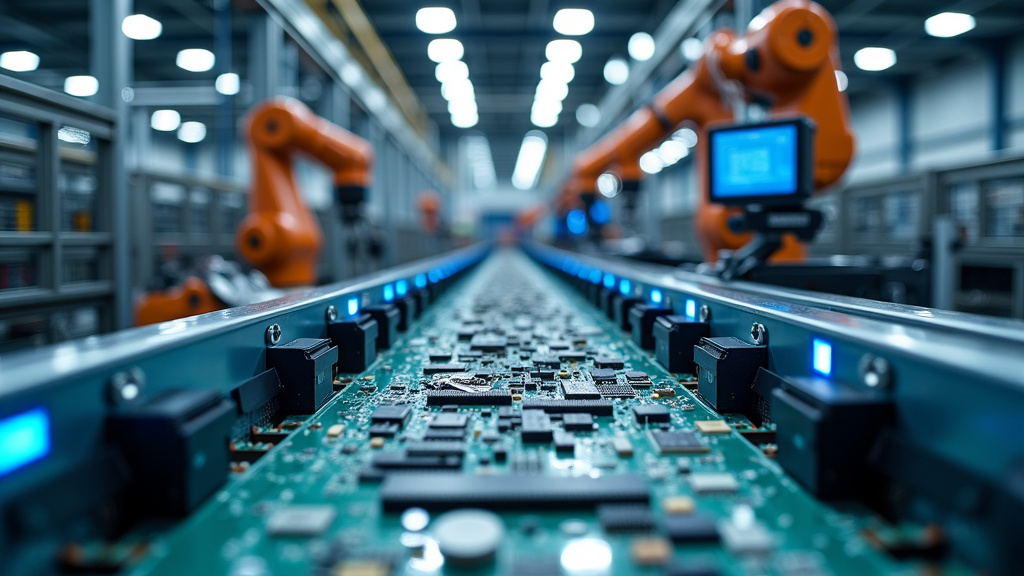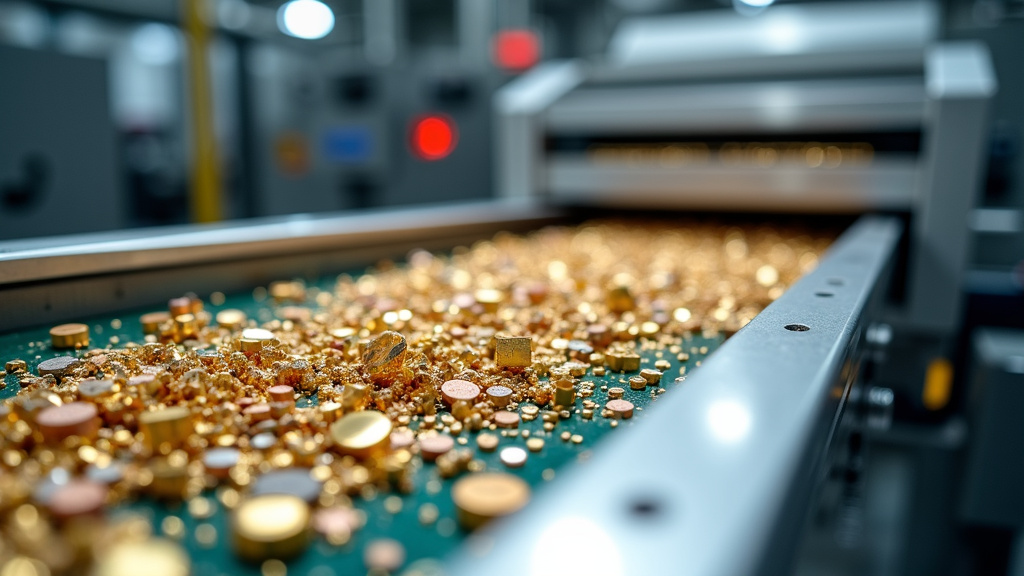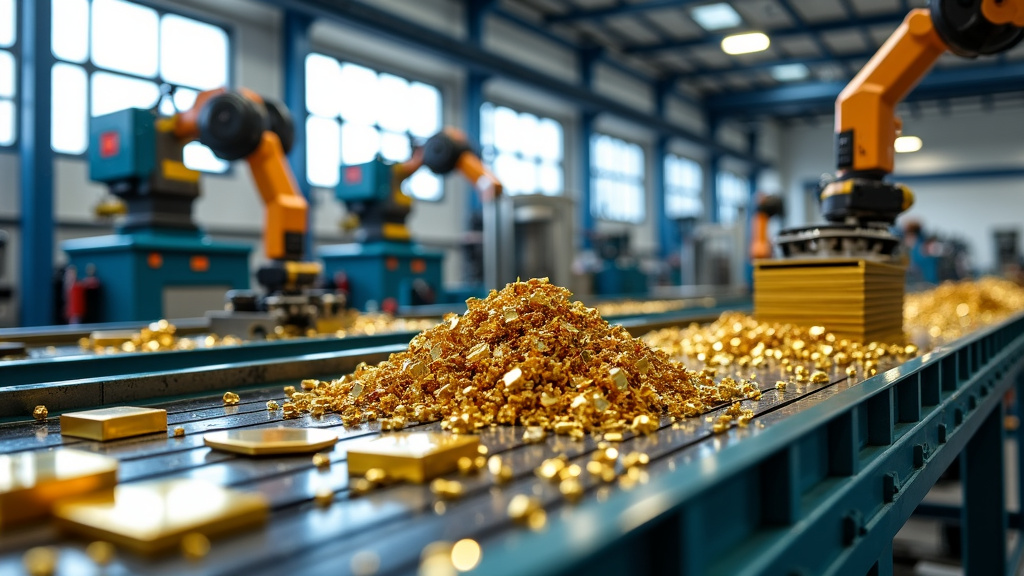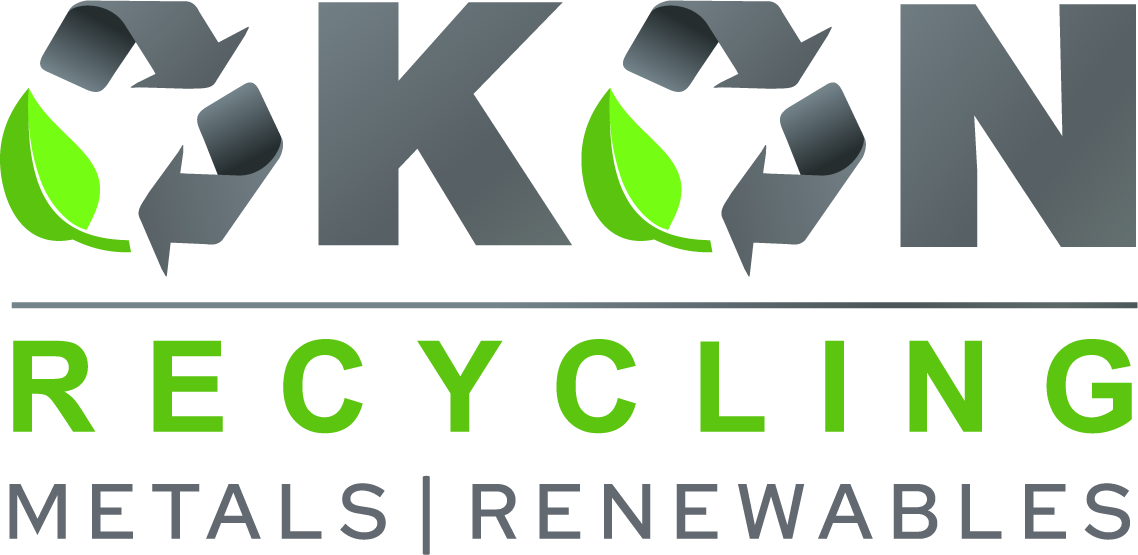5901 Botham Jean Blvd, Dallas, TX 75215
Exploring Rare Metal Recycling Grants for a Sustainable Future
February 19, 2025What if the discarded electronics cluttering our homes held the key to a greener future? As our reliance on technology grows, the urgency to address the challenge of rare metal waste increases. These precious resources, essential for everything from smartphones to renewable energy systems, often end up in landfills, squandering their potential and harming our environment.
Enter the world of rare metal recycling grants—a beacon of hope in our quest for sustainability. These initiatives are transforming how we handle electronic waste, turning what was once considered trash into valuable resources. But why are these grants so crucial, and how are they reshaping our approach to waste management?
Rare metal recycling is not just about keeping our planet clean; it is a vital link in the supply chain of our tech-driven world. By supporting innovative recycling methods, these grants pave the way for a circular economy where nothing goes to waste. Companies like Okon Recycling are at the forefront of this movement, developing specialized solutions to tackle the unique challenges of rare metal recovery.
Understanding the Impact of Rare Metal Recycling Grants

Rare metal recycling grants are significantly enhancing local and state recycling programs across the United States. These strategic investments aim to upgrade recycling infrastructure, enabling communities to adopt cutting-edge technologies and implement advanced processing techniques. The outcome? A notable reduction in waste and a boost to the circular economy.
The Environmental Protection Agency (EPA) plays a crucial role in this transformation. Through programs like the Solid Waste Infrastructure for Recycling (SWIFR) grants, the EPA is channeling substantial funds into improving post-consumer materials management. In 2023 alone, the agency announced over $100 million in SWIFR grants nationwide, demonstrating a strong commitment to enhancing recycling capabilities.
What do these grants mean for communities? They’re not just about recycling paper and plastic. Rare metals – critical elements found in smartphones, electric vehicle batteries, and solar panels – are a key focus. As our reliance on high-tech devices grows, so does the importance of recovering these valuable materials.
Technological Advances in Recycling
Grant recipients are using funds to adopt state-of-the-art recycling technologies. These aren’t your average sorting machines; we’re talking about advanced systems that can identify and separate rare metals with remarkable precision. Some facilities are implementing artificial intelligence and robotics to sort materials faster and more accurately than ever before.
For example, eddy current separators enhanced with the latest sensors can now detect and extract even the smallest particles of valuable metals like neodymium or indium from electronic waste. This level of efficiency was unthinkable just a few years ago. It’s not just about recycling more; it’s about recycling smarter.
Economic and Environmental Benefits
The impact of these grants extends far beyond the recycling facility. By improving rare metal recovery, communities are tapping into a lucrative market. Recycled rare metals can fetch high prices, providing a new revenue stream for local governments. This financial incentive is driving further investment in recycling programs, creating a positive feedback loop.
Environmentally, the benefits are clear. Every ounce of rare metal recycled is an ounce that doesn’t need to be mined. Consider this: recycling one ton of rare earth elements can prevent the production of up to 2,000 tons of toxic waste from mining operations. That’s a significant reduction in environmental impact.
| Benefit | Description |
| Energy Conservation | Recycling uses far less energy than producing new metals from raw materials. |
| Greenhouse Gas Reduction | Minimizes emissions associated with mining and smelting. |
| Resource Conservation | Reduces the need for mining and preserves finite natural resources. |
| Economic Growth | Recycling creates jobs and supports the economy by generating business opportunities. |
| Pollution Reduction | Decreases air and water pollution by reducing mining and landfill waste. |
| Landfill Space Preservation | Keeps metals out of landfills, conserving space. |
Community Engagement and Education
Recycling grants aren’t just funding hardware; they’re also supporting education initiatives. Many communities are using grant money to launch awareness campaigns, helping residents understand the importance of properly recycling electronics and other rare metal-containing items.
These efforts are crucial. The success of rare metal recycling programs depends heavily on public participation. By educating consumers about the value hidden in their old devices, communities are seeing increased participation in e-waste recycling programs.
Challenges and Future Outlook
Despite the progress, challenges remain. The extraction of rare metals from complex devices is still a technically demanding process. Moreover, the rapidly evolving nature of technology means recycling techniques must constantly adapt to new materials and designs.
However, the outlook is promising. As more communities benefit from recycling grants, we’re seeing a rise in innovation and collaboration. Recycling facilities are sharing best practices, and researchers are working closely with industry to develop even more efficient recycling methods.
The impact of rare metal recycling grants is undeniable. They’re not just improving recycling infrastructure; they’re catalyzing a shift towards a more circular, sustainable economy. As these programs continue to evolve and expand, we can expect to see even greater advancements in how we manage and recycle our most valuable resources.
How Rare Metal Recycling Grants Improve Industry Practices

Rare metal recycling grants have become essential tools for encouraging collaboration between government agencies and private sector entities, enhancing recycling processes and promoting sustainable resource management. These grants act as catalysts for innovation, driving improvements in industry practices and reducing reliance on environmentally harmful mining operations.
Government policies significantly influence rare metal recycling. By providing financial incentives, policymakers motivate companies to invest in advanced technologies and develop efficient recycling methods. This strategy benefits the environment and stimulates economic growth within the recycling sector.
One major impact of these grants is the acceleration of industry collaboration. When government and private entities join forces, they achieve remarkable results. For instance, the partnership between HG Ventures and American Rare Earth illustrates how such collaborations can innovate battery recycling and expand the supply of critical metals for U.S. manufacturing.
Key Benefits of Rare Metal Recycling Grants
Recycling grants offer numerous advantages for both the industry and the environment. Key benefits include:
- Enhanced Resource Management: Grants enable investment in advanced sorting technologies, improving the efficiency of rare metal recovery from electronic waste and other sources.
- Reduced Environmental Impact: By promoting recycling, these grants help decrease the need for mining operations, which often cause ecological damage.
- Economic Growth: The recycling industry creates jobs and stimulates local economies, particularly when supported by government incentives.
- Technological Innovation: Financial support encourages research and development of new recycling technologies, leading to more effective extraction methods.
- Supply Chain Resilience: Improved recycling practices contribute to a more stable supply of rare metals, reducing dependence on foreign sources.
Successful Collaborative Initiatives
Several success stories highlight the positive impact of government-private sector collaboration in rare metal recycling. For example, the U.S. Department of Energy’s Critical Materials Institute has partnered with multiple private companies to develop innovative recycling techniques for rare earth elements used in electronics and renewable energy technologies.
Another notable initiative is the European Union’s REE4EU project, which explores groundbreaking methods for recovering rare earth elements from waste materials. This collaborative effort unites research institutions, private companies, and government agencies to tackle the challenges of rare metal recycling.
Improving Industry Practices Through Grants
Rare metal recycling grants drive improvements in industry practices through various mechanisms:
- Funding for Equipment Upgrades: Companies can invest in state-of-the-art recycling equipment, boosting efficiency and output quality.
- Training and Education: Grants often include provisions for workforce development, ensuring employees are skilled in the latest recycling techniques.
- Research and Development Support: Financial assistance enables exploration of new recycling methods and technologies.
- Compliance Incentives: Grants may be tied to meeting specific environmental standards, encouraging adoption of best practices.
- Cross-Sector Knowledge Sharing: Collaborative projects facilitate the exchange of ideas and expertise between different industry players.
As demand for rare metals grows, particularly in renewable energy and technology sectors, effective recycling practices become increasingly important. Government grants are crucial in shaping a more sustainable and resource-efficient future for the rare metal industry.
By fostering collaboration, driving innovation, and promoting best practices, these grants contribute to creating a circular economy for rare metals. This approach conserves valuable resources and positions the industry for long-term success in an environmentally conscious world.
Challenges and Opportunities in Rare Metal Recycling

The rare metal recycling industry faces both daunting challenges and promising opportunities. As demand for these critical materials increases, driven by high-tech devices and green technologies, the sector grapples with hurdles that test its resilience and innovation.
One major challenge is maintaining material purity. The cycle for non-ferrous metals is complex, involving diverse scrap sources and varying degrees of metal purity and alloy presence. This intricate landscape requires advanced recycling technologies to ensure recovered materials meet the high standards needed for reuse in high-tech applications.
Adding to this challenge are the high processing costs associated with rare metal recycling. Extracting valuable elements from complex electronic waste requires substantial investment in advanced technologies and specialized facilities, presenting financial barriers for many potential industry entrants.
Innovative Solutions and Financial Support
Despite these obstacles, the rare metal recycling sector is not stagnant. Innovative solutions are emerging, driven by technological advancements and increased awareness of sustainable resource management. Breakthroughs in hydrometallurgical and pyrometallurgical processes are promising improved efficiency and cost-effectiveness in rare metal extraction.
Dr. Jane Smith, a leading expert in materials science at MIT, notes, “We’re seeing exciting developments in selective leaching techniques that could revolutionize how we extract rare earth elements from electronic waste. These methods have the potential to significantly reduce processing costs while maintaining the high purity levels required for industrial applications.”
Financial support, particularly in the form of grants, is crucial in addressing these challenges. The U.S. Department of Energy, recognizing the strategic importance of rare metal recycling, has been pivotal in these efforts. Recently, the DOE announced nearly $10 million in funding for two projects aimed at lowering costs and reducing the environmental impact of producing rare earth elements and other critical minerals from coal-based resources.
Towards Cost-Effective Solutions
This financial support is enabling the development of cost-effective solutions that could transform the industry. The REMADE Institute, a public-private partnership established by the U.S. Department of Energy, exemplifies this approach. In its latest funding round, REMADE announced $33 million in grants to support projects focused on reducing greenhouse gas emissions in manufacturing through recycling, reuse, and remanufacturing.
These initiatives are not just about overcoming current challenges; they’re about reimagining the entire lifecycle of rare metals. By investing in advanced processing technologies and circular economy principles, the industry is laying the groundwork for a more sustainable and economically viable future.
As we look ahead, the rare metal recycling industry is on the cusp of significant transformation. The challenges of material purity and high processing costs remain formidable, but with continued innovation and strategic financial support, the sector is poised to play a pivotal role in securing a sustainable supply of these critical materials for generations to come.
| Organization | Funding Amount | Purpose |
|---|---|---|
| US Department of Defense | $5.1 million | Rare earth oxide production project |
| Cyclic Materials | $53 million | Global expansion of rare earth recycling infrastructure |
| Natural Resources Canada | $3.6 million | Continued operation of Cyclic Materials |
The Future of Rare Metal Recycling Grants in Circular Economy

As global economies adopt circular principles, rare metal recycling is leading a transformative shift in resource management. The coming years promise exciting advancements in this field, driven by increased funding and innovative technologies.
Government agencies and private organizations recognize the potential of rare metal recycling to address resource scarcity and environmental concerns. Consequently, there will likely be a surge in grant funding to advance recycling technologies and infrastructure. This financial boost is expected to catalyze research into more efficient extraction methods, enabling the recovery of a wider range of rare metals from complex waste streams.
Emerging technologies are set to reshape the rare metal recycling landscape. Artificial intelligence and machine learning algorithms will enhance the precision of sorting and separation processes, significantly increasing recycling yields. Additionally, innovations in hydrometallurgy and bioleaching techniques promise to make the extraction of rare metals from electronic waste more economical and environmentally friendly.
The future of rare metal recycling will likely involve more localized and distributed recycling networks, reducing transportation costs and carbon emissions while creating new job opportunities globally. The development of urban mining practices will transform cities into valuable sources of rare metals, further supporting the circular economy model.
As these advancements unfold, we can expect a significant reduction in reliance on primary mining for rare metals. This transition will alleviate pressure on natural resources and minimize the environmental and social impacts associated with traditional mining practices. The circular economy approach to rare metal management will play a crucial role in building a more sustainable and resilient global supply chain for these critical materials.
Conclusion: Shaping the Recycling Landscape with Rare Metal Grants

Rare metal recycling grants play a crucial role in promoting sustainable resource management. These financial incentives drive innovation, enhance recycling efficiency, and support a circular economy.
Companies like Okon Recycling are leading the way, using grants to invest in cutting-edge recycling technologies that maximize material recovery and minimize environmental impact. Their efforts demonstrate how recycling can be both economically viable and environmentally responsible.
Beyond individual businesses, these grants stimulate job creation, boost local economies, and significantly reduce the environmental footprint of metal production. Recycling rare metals saves thousands of pounds of raw materials and conserves substantial energy, reducing reliance on resource-intensive mining.
To build a sustainable future, expanding recycling programs, implementing supportive policies, and raising public awareness are essential. Investing in rare metal recycling isn’t just about waste reduction—it’s about securing a cleaner, more resource-efficient world for future generations.
If you’re interested in supporting sustainable recycling initiatives, contact Okon Recycling at 214-426-6566 to learn about their innovative metal recycling solutions. Together, we can turn waste into opportunity and build a greener tomorrow.
